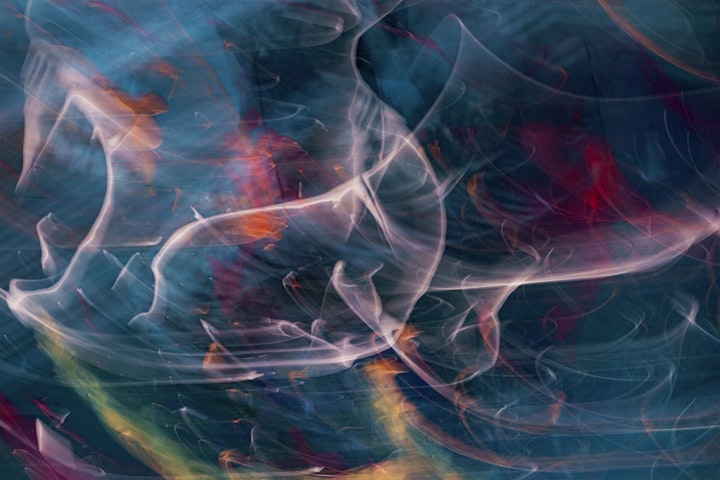Why Your Next Camera Should Be Mirrorless
What I Really Think

A couple of weeks ago, I wrote the article below citing four reasons your next camera should not be mirrorless and asked readers what they thought. It got a lot of readers and more than a few comments. Most of the comments were favorable. I am assuming they were from photographers who still shot with traditional DSLR cameras.
No one knew that the mirrorless camera I chose as the cover image — the same one used here, is my newest baby.
Yes, late last year, in 2019, I went mirrorless. I didn’t just go mirrorless; I went all in. I sold, traded, and gave away all of my Canon equipment except for the flash. (I always shoot manual with flash, so the brand doesn’t matter.) I have been a Canon shooter since the AE1-Program back in the days of film. At the point I switched, I had a body and lenses that cost almost $10,000 for when new.
I had decided some time ago, that in late 2019 or early 2020, I would buy a new body. I had been shooting with the 5D MKIII for 7 years and although it was still a great camera, it was showing wear, and technology had progressed. When I first decided, I assumed that my next body would the MKIV. It had been out for a while, so the price had stabilized. It had some new features I was interested in, and it seemed the natural progression for me.
So what changed?
My mind, I guess. Mirrorless cameras weren’t new. They had been around for a long time, but it was the Sony a7 in 2013, that really got people’s attention. I didn’t have much knowledge about mirrorless, but I knew that, if nothing else, removing the mirror and the need for it to move out of and then back in the way, would help with stability. I began watching videos and reading reviews and soon decided I at least needed to consider one for my next body.
Being a Canon shooter, the newest line of Canon mirrorless cameras was the first place I looked. But two things dissuaded me. First, they seemed to be behind the curve on technology, but a new-gen body would be announced “soon.” Second, I discovered that the collection of lenses I had used on three different cameras for 15 years would need replacing, or assisted with a converter.
So, I began looking at other brands. It didn’t take long to decide it would be the Sony or a Fuji XT-3. Sony offered in-body stabilization (IBS), which was a nice feature. It was also full-framed, which I had incorrectly come to associate with professional. No one had anything bad to say about the Sony. It worked. It got the job done.
But people absolutely loved the Fuji. The size, form factor, and analog controls were features that most people fawned over. And the more I thought about it, while remembering my old AE1, I thought it would be a pleasant change. If nothing else, it would reboot my photography.
And, man, was I right. It was like starting over and falling in love with photography as I did decades before. Plus, it gave me the opportunity to buy all new lenses. And I could decide which lenses with the accumulated knowledge of shooting digital for over 15 years and 100K frames.
Size and Weight
This is true of most mirrorless cameras, but the Fuji is much smaller and lighter. Even though I had invested in a good BlackRapid strap years ago, walking around all day with the MKIII and a heavy zoom all day left me with a very sore shoulder. I’m no spring chicken. I’m not even a summer chicken. Putting the Fuji on my BlackRapid felt like I was carrying an empty strap.
Live View
This isn’t new and my MKIII could do this with the LCD, but I’ve never been one to shoot using the LCD unless I was on a tripod in the studio. Mirrorless cameras have live view through the viewfinder. Purists will argue that this isn’t true live view because you aren’t looking through the lens. Purists are idiots. Purists got angry when they invented film.
What you see through the viewfinder is what the final image will look like, and isn’t that the most important thing? Now, you not only see the composition, but the light and the white balance. For histogram junkies, it’s live, as well. You don’t have to shoot and then chimp to see the histogram. The Get It Right In-Camera crowd should love that. Want to add special effects or switch to black and white? You get to see the results immediately, before you shoot.
The Controls
Okay, this is only for my Fuji, but it is one of the reasons I switched and why I chose Fuji. All the major controls are analog. This means you can see and easily set your exposure triangle before you shoot. Before you even turn the camera on. And most of the controls are configurable. For instance, I moved exposure compensation to the front dial, because that was a more natural position than the EC dial they set up.
You still have a full digital menu system via the LCD and you can do almost anything there, but the feel of the old school analog dials just feels right.
Noise
I’m not talking about digital noise, although it is much better than in my Canon. That has more to do with advances in sensor technology than being mirrorless. I’m talking about actual noise.
There isn’t any.
Or at least you can make it that way. The first thing I do with any piece of electronic equipment is turn off all the beeps, boops, and whistles manufacturers think we want. But with mirrorless it goes beyond that. If you use the electronic shutter (a mechanical shutter is still available), you can shoot in absolute silence.
Years ago, I was in Pensacola for a photoshoot. Driving around before the session started, I came across a horse-riding arena where people were practicing for some shows coming up. I slipped inside and waited for the horse and rider to pass through the best light and took a picture. Every human and the horse in the place heard the shutter.
None of them were happy. I left.
Now, whether you are shooting in a church during a ceremony, or trying to get some candid street photography, no one will hear the mirror slap-up and down and the shutter curtains move back and forth.
There are many more reasons for choosing mirrorless; most of them vary by brand. But if you are looking to reboot your photography, I can’t recommend it strongly enough. And if you are thinking mirrorless, I love my Fuji.

About the Creator
Darryl Brooks
I am a writer with over 16 years of experience and hundreds of articles. I write about photography, productivity, life skills, money management and much more.






Comments
There are no comments for this story
Be the first to respond and start the conversation.